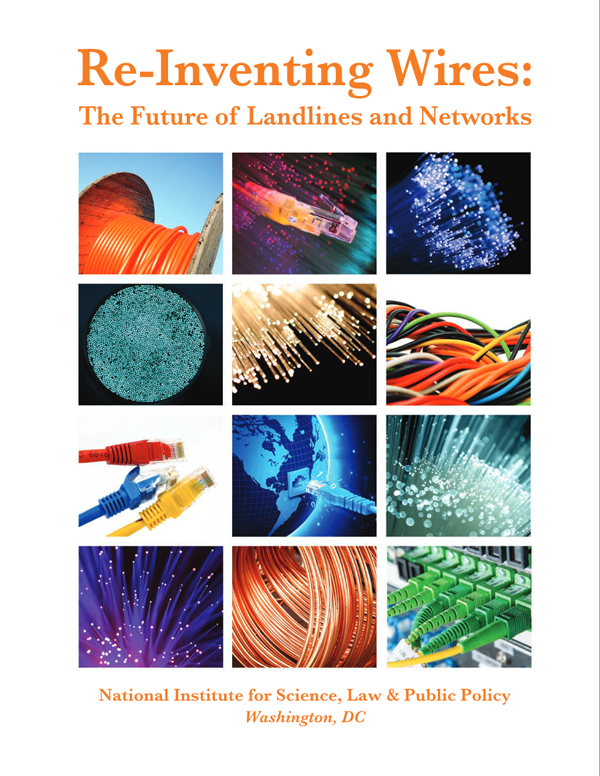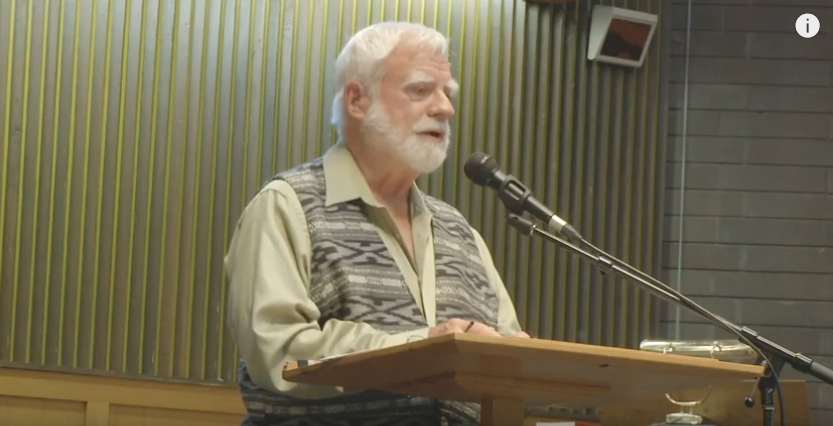Importance of Wired Connections

Re-Inventing Wires by Timothy Schoechle
“Wireless Networks Are Not as Fast, Secure, Reliable or Energy-Efficient as Wired Systems. The U.S. Should Instead Invest in Hard-Wired Telecommunications Infrastructure to Support Economic Growth, Bridge the Digital Divide and Diminish Risks to Security, Privacy, Public Health and the Environment .”
– Timothy Schoechle
“Re-Inventing Wires: The Future of Landlines and Networks” is authored by communications technology expert Dr. Timothy Schoechle, PhD, an international consultant in computer engineering and standardization, former faculty member of the University of Colorado, College of Engineering and Applied Science and Senior Research Fellow at the National Institute for Science, Law & Public Policy.
Dr. Schoechle says, “We are seeing the present national emphasis on wireless technologies because the “triopoly”, of Verizon, AT&T, and Comcast that dominates our access to the Internet imposes artificial scarcity, planned obsolescence, and high prices to maintain their immense profits. It is in their interest to obscure the fact that advanced copper and optical fiber are far superior to wireless in both cost and performance.”
Investment in wired, not wireless, information infrastructure is needed across the U.S. right now.
From a broad analysis of available data, “Re-Inventing Wires: The Future of Landlines and Networks” demonstrates wireless systems cannot provide long-term solutions for universal, reliable and affordable Internet accessibility, nor support the ever-increasing data rates that will be needed in the near future for each American home and business. Investment in wired, not wireless, information infrastructure is needed across the U.S. right now.
Schoechle says, “Government officials have been misled about the adequacy of wireless communications. Legislators should stop enabling the wireless industry’s plans for massive new deployments of 4G LTE and soon 5G millimeter wave antennas throughout American neighborhoods, and instead commit to supporting reliable, energy-efficient and enduring hard-wired telecommunications infrastructure that meets the nation’s immediate and long-term needs.”
“Re-Inventing Wires: The Future of Landlines and Networks” explains why on technological and other grounds an intensely wireless approach to communications is the wrong direction.
The wireless industry is forging full throttle ahead to install millions of new antennas, and dozens of Bills in Congress, and in State legislatures, seek to pre-empt local laws and regulations. A national fiber broadband system deployed as close to the consumer as possible, the report says, is a more intelligent choice, in many respects.
A national network of locally controlled fiber networks would far better serve to sustain economic growth and competitiveness, meet projected market demand, overcome access inequality and second-rate connectivity issues, and diminish a range of well-known risks from wireless communication, including safety, security, privacy, public health and environmental risks, while at the same time reducing the extraordinary, and little considered, energy requirements of wireless and cellular networks.
Schoechle says, “An advanced information highway is what is needed, not an inefficient and expensive ‘toll road’.”
He adds, “The Internet has become one of the defining technologies of our society. It is our central medium for commerce and communication—but more importantly—for our public discourse, engagement, and democratic governance. Largely due to failures and consequences of the Telecommunications Act of 1996, the internet is not living up to its potential. It has been hijacked by the commercial motivations that have come to re-define and constrain the availability, quality, content, and media of high-speed access in the United States…
While other countries are investing to assure citizens’ access to a fast and reliable information highway, U.S. legislators appear asleep at the switch, captured by the wireless industry and its lobbyists.”
SafeG: A Safe Alternative to Harmful 5G Wireless

Why you should consider SafeG over 5G
The wireless industry has fired the starting gun for the so-called “race to 5G.” Why 5G? The simple answer is that it comes after 4G. That’s the previous generation of wireless technology, and the industry is desperately seeking a way to increase its slumping profits by selling an expensive and unnecessary “upgrade.”
But, why a race? It’s because the industry is hoping that in the blur of a huge, flashy advertising campaign, you won’t notice any of the following:
- Neither the industry nor regulatory agencies such as the Federal Communications Commission and the Food and Drug Administration, have tested new 5G frequencies for safety. Yet, scientists expert in how this type of radiation interacts with biology warn that the new 5G technologies may be far more dangerous than previous generations of wireless technology.
- A long-term U.S. government study just clearly linked the kind of wireless radiation emitted by cellphones to cancer.
- The vast number of new antennas required for 5G service will be closely spaced on utility poles right outside of homes in residential neighborhoods. Those antennas will dramatically increase your exposure to wireless radiation. (For more information about this issue, referred to as antenna densification, read 5G: Under the Hood. Hint: It’s mostly 4G antennas which are on all the time and now much closer to you.)
- The radiation will be beamed directly into your home (or business) 24/7/365. You will never be able to turn it off.
- You will be subjected to this radiation whether you purchase 5G service or not. The wireless industry is seeking to put antennas that service 5G close to homes in every neighborhood regardless of whether residents want or use the service.
What is SafeG?
SafeG offers a safe, reliable alternative to the dangerous future which 5G would create. SafeG is not a single product or service, but a framework for an internet and telecommunications system that respects our health, our privacy, our security and our right to choose what is best for ourselves and our communities. We define SafeG as follows:
SafeG means safe, fast, reliable, secure internet and telecommunications services brought into our homes and businesses by wired technology. It means technology that safeguards our health, privacy and security and that evolves over time with the goal of reducing exposure to harmful wireless radiation.
SafeG accepts the right of homeowners and businesses to decide for themselves whether to have wired or wireless networks on their premises without forcing that choice on others.
We recognize, however, that most wireless systems designed for homes and businesses (often referred to as Wi-Fi) are vastly overpowered and therefore broadcast into neighboring buildings and outdoor areas while needlessly exposing users in the building to extra radiation.
We recognize, however, that most wireless systems designed for homes and businesses (often referred to as Wi-Fi) are vastly overpowered and therefore broadcast into neighboring buildings and outdoor areas while needlessly exposing users in the building to extra radiation.
While we favor wired networks in homes and businesses, for those who choose wireless networks, we recommend the use of router cages or “socks” for wireless routers. These reduce the wireless signal to what is needed to serve the premises only. Another possibility is to use a router that allows users to turn down the power, sometimes up to 90 percent. Such routers may also have timers that allow for timed on and off so the router isn’t on when it’s not in use such as in the middle of the night.


